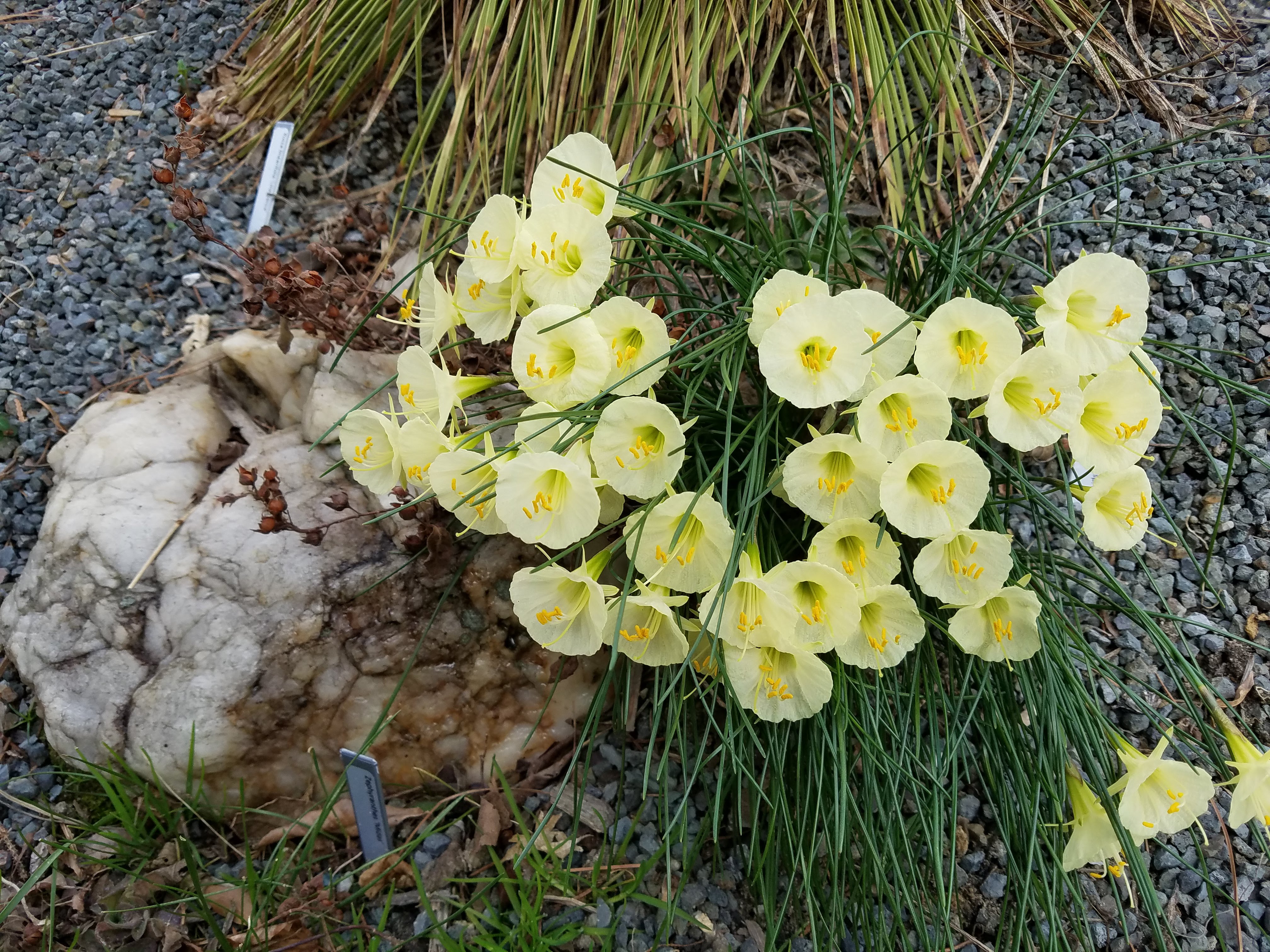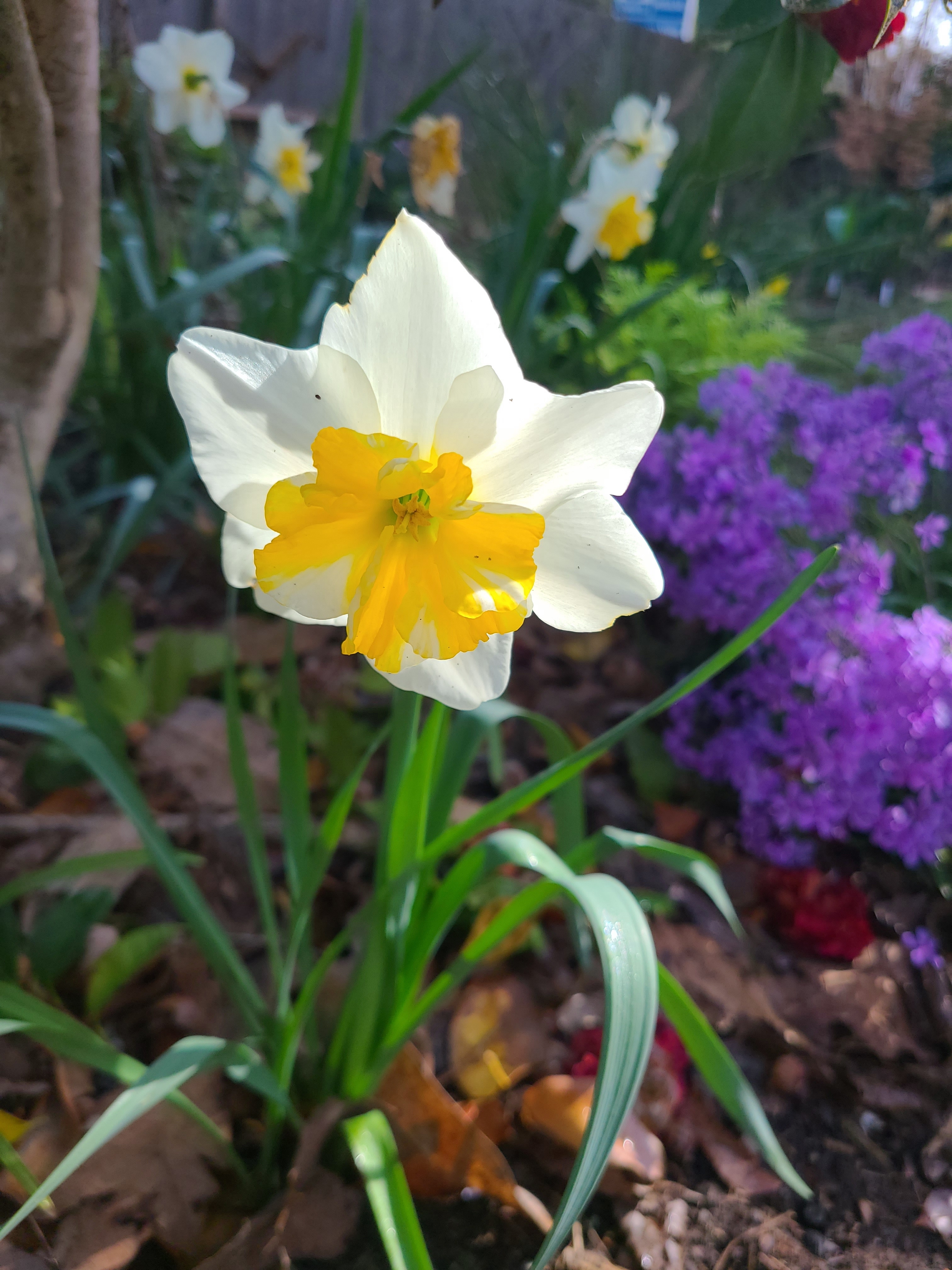Daffodils: 13 Divisions of Horticultural Wonder
go.ncsu.edu/readext?987813
en Español / em Português
El inglés es el idioma de control de esta página. En la medida en que haya algún conflicto entre la traducción al inglés y la traducción, el inglés prevalece.
Al hacer clic en el enlace de traducción se activa un servicio de traducción gratuito para convertir la página al español. Al igual que con cualquier traducción por Internet, la conversión no es sensible al contexto y puede que no traduzca el texto en su significado original. NC State Extension no garantiza la exactitud del texto traducido. Por favor, tenga en cuenta que algunas aplicaciones y/o servicios pueden no funcionar como se espera cuando se traducen.
Português
Inglês é o idioma de controle desta página. Na medida que haja algum conflito entre o texto original em Inglês e a tradução, o Inglês prevalece.
Ao clicar no link de tradução, um serviço gratuito de tradução será ativado para converter a página para o Português. Como em qualquer tradução pela internet, a conversão não é sensivel ao contexto e pode não ocorrer a tradução para o significado orginal. O serviço de Extensão da Carolina do Norte (NC State Extension) não garante a exatidão do texto traduzido. Por favor, observe que algumas funções ou serviços podem não funcionar como esperado após a tradução.
English
English is the controlling language of this page. To the extent there is any conflict between the English text and the translation, English controls.
Clicking on the translation link activates a free translation service to convert the page to Spanish. As with any Internet translation, the conversion is not context-sensitive and may not translate the text to its original meaning. NC State Extension does not guarantee the accuracy of the translated text. Please note that some applications and/or services may not function as expected when translated.
Collapse ▲February roadsides in the South are peppered with historical patches of daffodils. All that is left of some old home foundations are lines of the cheerful winter blooms. Lee County is home to tens of cultivars that have been in the county for decades; probably ordered from seed catalogs and gifted from old supply stories. They are tough, surviving in strange and random places with little to no maintenance beyond a seasonal mowing. They are effortlessly beautiful, and their vigor and survivability are what have kept humans including them in our gardens for thousands of years. Let’s explore the diversity that makes this group so special.
The genus Narcissus
Daffodils are in the genus Narcissus, and named for the Greek figure who saw his reflection in a pool and fell in love with himself. We know daffodils aren’t that self-absorbed, but the species, hybrids and cultivars are incredibly diverse and have

Narcissus bulbicodium – Photo by Amanda Wilkins
become the harolds of the turning from the doldrums of Winter to the hope of Spring in our southern gardens. Even still, Narcissus are native to the Mediterranean region, from Northern Africa to Southern France to Israel, and have only been introduced to the US since Europeans have been gardening here.
The World Flora Online Plant List recognizes 166 different species and all of them would be recognizable as daffodils, just in a myriad of colors, shapes and sizes. Humans have been moving them for thousands of years along the Silk Road, to the point that daffodils can be found into Central Asia; but are considered relicts of past humans rather than being native to those regions! This stands to reason, as natural hybrids have created beautiful bloom colors and they have captivated humans’ horticultural minds.
The Modern Horticultural Diversity of Daffodil
Daffodils have a unique, but mostly orderly flower structure: the whorl of six (typically) “petals” are called a perianth, because they consist botanically of both petals and sepals. Then there is the “trumpet” in the center, botanically called a corona, which are true petals, just fused together. There are always six stamens (if the flower is not “double”) and three ovaries fused together that will form a fruit if the flower is pollinated.
In modern times, the Royal Horticultural Society has taken to organizing all the daffodils to help with streamlining spring bulbs show judging (yes, people show daffodils), but this order also helps gardeners sort out the amazing variety of blooms. You’d have to have some system, because the American Daffodil Society estimates there are more than 32,000 registered cultivars of daffodils in the world! There are 13 recognized divisions for daffodil blooms, and miniatures, any flower less than two inches, are judged in similar categories, but separately from larger blooms. This division structure is based off of: the number of flowers per stem; the ratio of the corona to the perianth length; how many “petals” are in the perianth; whether those “petals” are reflexed (facing back towards the stem); and how closely they resemble their wild species cousins.
Adding New Daffodil Varieties
Daffodils are easy to find in our modern horticultural world. Many of our local nurseries and home improvement chains will carry them in the fall and winter, and some will put them on sale as we get closer to Christmas because they do not store well once they’ve been sitting on the store shelf. There are some incredible online mail order nurseries that specialize in bulbs and will give you a wider variety of options than your local store. You should order these in the summer to get the ones you want, but they will not ship until the fall. Most horticultural varieties should do just fine in Lee County, so check them out and see if you can expand your daffodil palette!
It is best to get them in the ground in November and December, but we have seen some anecdotal success planting them even into January. Make sure the site you want to put them in has well-draining soil and never gathers water. The site should get full sun in the winter, but can be shady in the summer! Don’t mow your daffodil foliage before it turns brown! This is because once a daffodil flowers its leaves are

Single Daffodil – photo by Amanda Wilkins
still growing, and you need to leave these to continue to photosynthesize and gather energy for storing and making flowers for next year. If you cut the foliage too soon year after year, you will get few to no blooms. Despite what daffodils’ wild cousins might tell you, the American Daffodil Society recommends putting a low NPK-value (around 5-5-5) fertilizer around your daffodils when you first see the leaf tips emerge and then again as the flowers are opening can help bolster your bulbs’ health and growth.
Not only do daffodils come in a vibrant variety of shapes and colors, they also bloom at different times throughout the winter. Some will come up very early in January or February, and some will not pop up until March. Make sure to read the descriptions to understand the bloom time. You know you are in for a treat if you can have a variety of colors, as well as a long bloomtime!
Amanda Wilkins is the Horticulture Agent for North Carolina Cooperative Extension in Lee County.
Resources:




